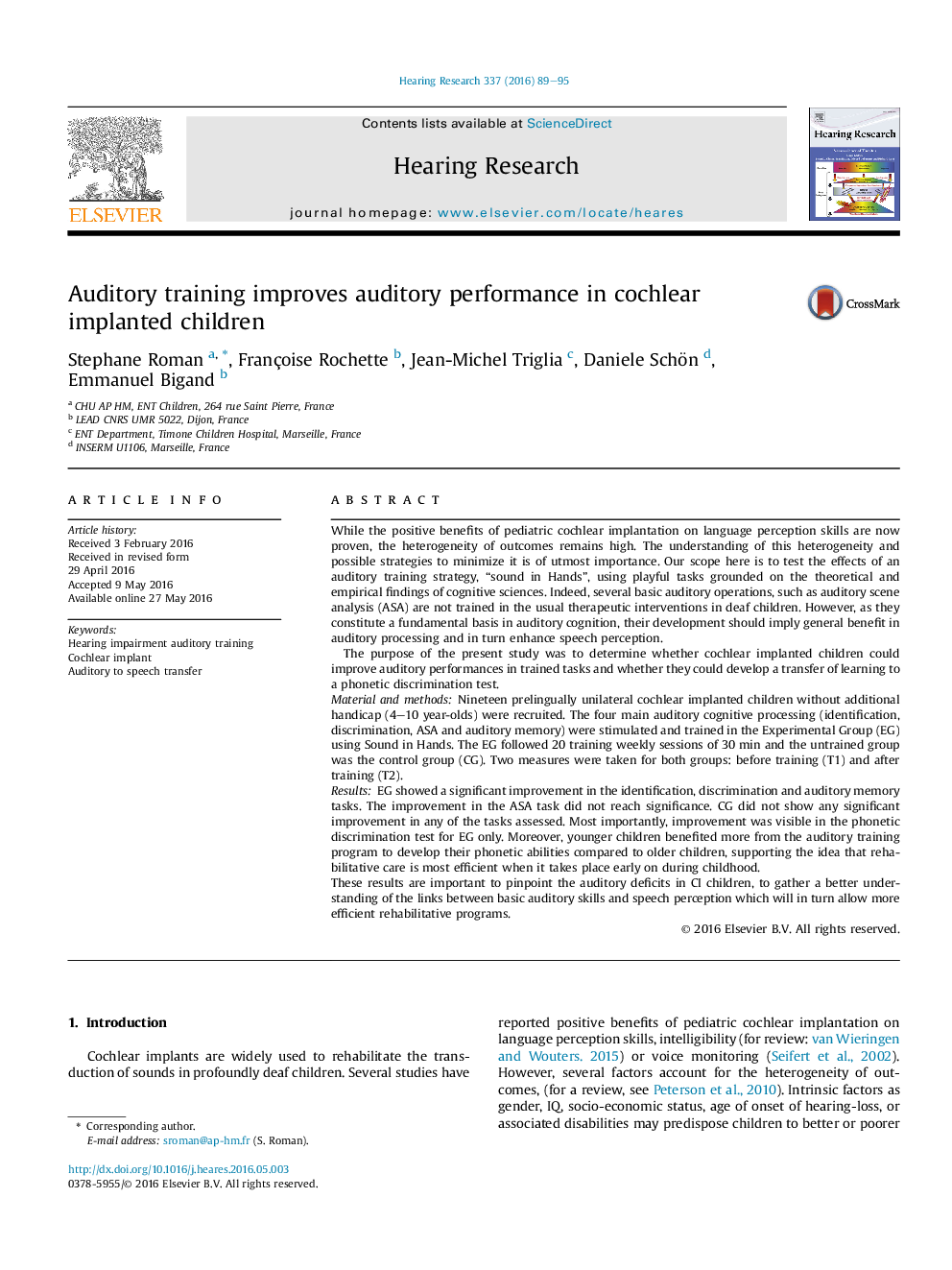| کد مقاله | کد نشریه | سال انتشار | مقاله انگلیسی | نسخه تمام متن |
|---|---|---|---|---|
| 6286979 | 1615563 | 2016 | 7 صفحه PDF | دانلود رایگان |
- Auditory training improves auditory perception in cochlear implant children.
- Improvement transfers to non-trained phonetic skills.
- Transfer of training to phonetic abilities is stronger in younger children.
While the positive benefits of pediatric cochlear implantation on language perception skills are now proven, the heterogeneity of outcomes remains high. The understanding of this heterogeneity and possible strategies to minimize it is of utmost importance. Our scope here is to test the effects of an auditory training strategy, “sound in Hands”, using playful tasks grounded on the theoretical and empirical findings of cognitive sciences. Indeed, several basic auditory operations, such as auditory scene analysis (ASA) are not trained in the usual therapeutic interventions in deaf children. However, as they constitute a fundamental basis in auditory cognition, their development should imply general benefit in auditory processing and in turn enhance speech perception.The purpose of the present study was to determine whether cochlear implanted children could improve auditory performances in trained tasks and whether they could develop a transfer of learning to a phonetic discrimination test.Material and methodsNineteen prelingually unilateral cochlear implanted children without additional handicap (4-10 year-olds) were recruited. The four main auditory cognitive processing (identification, discrimination, ASA and auditory memory) were stimulated and trained in the Experimental Group (EG) using Sound in Hands. The EG followed 20 training weekly sessions of 30Â min and the untrained group was the control group (CG). Two measures were taken for both groups: before training (T1) and after training (T2).ResultsEG showed a significant improvement in the identification, discrimination and auditory memory tasks. The improvement in the ASA task did not reach significance. CG did not show any significant improvement in any of the tasks assessed. Most importantly, improvement was visible in the phonetic discrimination test for EG only. Moreover, younger children benefited more from the auditory training program to develop their phonetic abilities compared to older children, supporting the idea that rehabilitative care is most efficient when it takes place early on during childhood.These results are important to pinpoint the auditory deficits in CI children, to gather a better understanding of the links between basic auditory skills and speech perception which will in turn allow more efficient rehabilitative programs.
Journal: Hearing Research - Volume 337, July 2016, Pages 89-95
